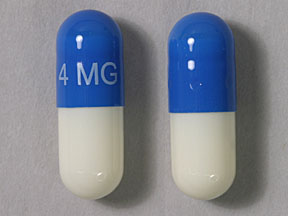Zanaflex Disease Interactions
There are 4 disease interactions with Zanaflex (tizanidine).
Tizanidine (applies to Zanaflex) hepatotoxicity
Major Potential Hazard, High plausibility. Applicable conditions: Liver Disease
Tizanidine may cause hepatocellular injury. According to the manufacturer, approximately 5% of patients treated with tizanidine in clinical studies had elevations in serum transaminases greater than 3 times the upper limit of normal (or 2 times if baseline levels were elevated), compared to 0.4% in control patients. Most cases were asymptomatic and resolved rapidly following withdrawal of the drug. However, liver failure resulting in death has been reported in postmarketing use. In three cases cited by the package labeling, two involved concomitant use of hepatotoxic agents in addition to tizanidine, while the third had no other known risk factors. Because of potential hepatotoxicity, therapy with tizanidine should be administered cautiously in patients with impaired hepatic function. All patients treated with tizanidine should have liver function tests performed at baseline, 1, 3 and 6 months, and periodically thereafter. In addition, they should be instructed to immediately report any signs and symptoms of hepatic injury such as fever, rash, anorexia, nausea, vomiting, fatigue, right upper quadrant pain, dark urine and jaundice.
References
- Wallace JD "Summary of combined clinical analysis of controlled clinical trials with tizanidine." Neurology 44 (11 sup (1994): s60-8;dic. 68-9
- Nance PW, Bugaresti J, Shellenberger K, Sheremata W, Martinez-Arizala A "Efficacy and safety of tizanidine in the treatment of spasticity in patients with spinal cord injury. North American Tizanidine Study Group." Neurology 44 (11 sup (1994): s44-51;dic. 51-2
- Smith C, Birnbaum G, Carter JL, Greenstein J, Lublin FD "Tizanidine treatment of spasticity caused by multiple sclerosis: results of a double-blind, placebo-controlled trial. US Tizanidine Study Group." Neurology 44 (11 sup (1994): s34-42;dic. 42-3
- "Product Information. Zanaflex (tizanidine)." Acorda Therapeutics PROD (2001):
Tizanidine (applies to Zanaflex) hypotension
Major Potential Hazard, High plausibility. Applicable conditions: Dehydration
Tizanidine is a centrally-acting alpha-2 adrenergic agonist with 1/10 to 1/50 the potency of clonidine in lowering blood pressure. According to the manufacturer, two-thirds of patients in a study given single 8 mg doses of tizanidine had a 20% reduction in either the diastolic or systolic blood pressure. The effect was seen one hour after dosing and peaked at 2 to 3 hours post-dose. Bradycardia, orthostatic hypotension, lightheadedness, dizziness and, rarely, syncope have occurred. Therapy with tizanidine should be administered cautiously in patients with or predisposed to hypotension. The risk of significant hypotension may be minimized by gradual dosage titration. Patients should be advised not to rise abruptly from a supine position.
References
- Wallace JD "Summary of combined clinical analysis of controlled clinical trials with tizanidine." Neurology 44 (11 sup (1994): s60-8;dic. 68-9
- "Product Information. Zanaflex (tizanidine)." Acorda Therapeutics PROD (2001):
Tizanidine (applies to Zanaflex) renal dysfunction
Major Potential Hazard, High plausibility.
The clearance of tizanidine has been shown to reduce by more than 50% in elderly patients with renal impairment (creatinine clearance < 25 mL/min) compared to healthy elderly patients. Prolonged pharmacologic effects of tizanidine may occur due to drug accumulation. Therapy with tizanidine should be administered cautiously and initiated at reduced dosages in patients with impaired renal function. During titration, individual doses rather than the dosing frequency should be increased.
References
- "Product Information. Zanaflex (tizanidine)." Acorda Therapeutics PROD (2001):
Tizanidine (applies to Zanaflex) psychoses
Moderate Potential Hazard, Moderate plausibility. Applicable conditions: Psychosis, History - Psychiatric Disorder
Formed, visual hallucinations or delusions have been reported in 3% of patients treated with tizanidine in two North American controlled clinical studies. Therapy with tizanidine should be administered cautiously in patients with a history of psychiatric disorders.
References
- Wallace JD "Summary of combined clinical analysis of controlled clinical trials with tizanidine." Neurology 44 (11 sup (1994): s60-8;dic. 68-9
- Nance PW, Bugaresti J, Shellenberger K, Sheremata W, Martinez-Arizala A "Efficacy and safety of tizanidine in the treatment of spasticity in patients with spinal cord injury. North American Tizanidine Study Group." Neurology 44 (11 sup (1994): s44-51;dic. 51-2
- Smith C, Birnbaum G, Carter JL, Greenstein J, Lublin FD "Tizanidine treatment of spasticity caused by multiple sclerosis: results of a double-blind, placebo-controlled trial. US Tizanidine Study Group." Neurology 44 (11 sup (1994): s34-42;dic. 42-3
- "Product Information. Zanaflex (tizanidine)." Acorda Therapeutics PROD (2001):
Zanaflex drug interactions
There are 608 drug interactions with Zanaflex (tizanidine).
Zanaflex alcohol/food interactions
There are 2 alcohol/food interactions with Zanaflex (tizanidine).
More about Zanaflex (tizanidine)
- Zanaflex consumer information
- Check interactions
- Compare alternatives
- Pricing & coupons
- Reviews (117)
- Drug images
- Side effects
- Dosage information
- During pregnancy
- Generic availability
- Support group
- Drug class: skeletal muscle relaxants
- En español
Related treatment guides
Drug Interaction Classification
| Highly clinically significant. Avoid combinations; the risk of the interaction outweighs the benefit. | |
| Moderately clinically significant. Usually avoid combinations; use it only under special circumstances. | |
| Minimally clinically significant. Minimize risk; assess risk and consider an alternative drug, take steps to circumvent the interaction risk and/or institute a monitoring plan. | |
| No interaction information available. |
Further information
Always consult your healthcare provider to ensure the information displayed on this page applies to your personal circumstances.


